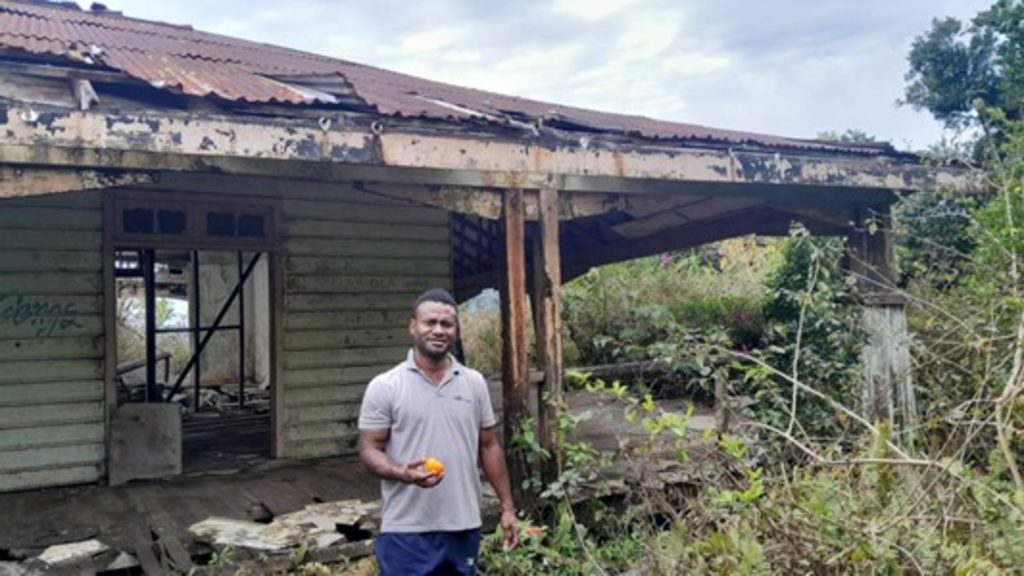On a 2700ft high escarpment in Nadarivatu, facing the Northern Coast sits some remnants of a colonial administrative centre.
Once a thriving hill station during colonial times, it has now become a place of interest to many.
Last month The Sunday Times team was fortunate to have covered the Nadarivatu Forest Park opening. We were caught off-guard by the area’s firmly embedded history.
The new park is situated close to the old administrative centre or hill station that was established by Adolph Brewster in the late 1800s.
Today, some of the old houses still stand but of course in disrepair.
Mr Brewster was the Governor’s Commissioner for the Provinces of Colo North and Colo East. He was also the Deputy Commandant of the Armed Native Constabulary of Fiji during his time here.
The idea of a hill station situated up in Nadarivatu was initially Sir John Bates Thurston’s idea when he was Governor. He had intended to develop Nadarivatu into a colonial sanatorium but later died after an illness.
Thurston’s death prevented him from implementing the plan, but Brewster took it upon himself to establish it.
Today, as you make your way to the current Nadarivatu Government Station, you will get a glimpse of that once prosperous hill station with old tennis posts and rest houses perched on hills.
This was unquestionably an active community in the late 1800s and early 1900s.
To date five colonial rest houses remain in the highlands, a few in use and the others unlivable.
Even though the homes are now in shabby conditions, they still tell a story of eminence during the colonial time.
As you walk around Nadarivatu you’re taken back in time when roads were bridle tracks that were practicable by horses and bullocks.
When you enter Nadarivatu, you get a clear view of the old home that Brewster and Ratu Sukuna once lived in. It was also believed to have been where former governors would stay during their visit to the highlands.
The house is currently undergoing renovation works and is now used as the district officer’s residence.
Another beautiful colonial home that still stands today in Nadarivatu is William Ernest Goodsir’s home.
According to a Pacific Islands Monthly article from August 1958, Mr Goodsir was the deputy-mayor of Suva in 1952 and was one of the best-known businessmen in the colony.
He had moved to Fiji from New Zealand in 1924 and throughout his life was associated with the timber industry.
In 1949, he formed the Nadarivatu Timber Company Ltd and became managing director, and when that company worked out its areas in the mountains behind Tavua (Nadarivatu) he transferred its operations.
His former home is now a rustic retreat in the highlands known as the Stone Bowl Lodge. It’s a popular lodge where travellers can stay when visiting the inlands, providing accommodation for those hoping to stay and allows guests to enjoy the old colonial home with its misty views of the mountains.
Apart from the two homes mentioned, there are three other rest houses up in the highlands. Not a lot of details are known about them, but they have their own unique appeal.
As highlighted by the Nadarivatu forest guard, Kuruvitu Siva, two of the rest houses were believed to be once owned by the Emperor Gold Mine.
The two buildings are situated close to each other while the rest of the houses are far apart.
“The fifth rest house was believed to have belonged to the Wesleyan Mission at the time,” he said.
This property is a few metres away from the current district officer’s home.
Hidden in the dense forest, at the end of a zigzag road, this property seems to have its own appeal – it has a beautiful view of the mountainous backdrop that Nadarivatu is well-known for.
The old homes up in Nadarivatu not only represent status. They also exhibit good quality.
The wood used are sturdy and the touch ups on chimneys show good craftsmanship – basically exuding a sense of charm and antiquity.
The buildings’ ability to survive Nadarivatu’s cold temperatures and rainy conditions for decades speaks volume of its solid construction.
There are other distinct features about the old administrative centre that needs to be highlighted. It was also the headquarters of a small detachment of the Armed Native Constabulary of Fiji, the old A.N.C as they were called back then.
According to Brewster who founded the hill station, the original camp for the detachment was laid out in the form of a square on a small plateau – on the northern side of which was the officers’ quarters that faced a garden.
The lower or southern side was basically occupied by the barracks and the parade ground.
He wrote in his book “The Hilltribes of Fiji” that on the lower or Southern camp was a small rill which was one of the many heads of the Sigatoka River and that five miles on the southerly direction from the hill station, was Mount Tomaniivi – over which passes the main mail track to Suva.
Not only does the old mail track pass Nadarivatu, it also has the Tuleita.
The Tuleita as explained by Brewster was believed to be a spiritual path which passed the shades of the dead after they departed this life. The path was believed to go to Mount Olympus of Fiji, the shrine of Degei.
The Tuleita was also described by Brewster as the highway to the west, along which he would often travel in the ordinary course of his duty.
It is also believed to be the ancestors’ trails when they travelled from Vuda to Nadarivatu and then to Nakauvadra.
Brewster said he would often take his evening walks to the edge of the precipitous cliffs linked to the Tuleita to watch the setting sun dip away beyond the Yasawas, a site still visible today from the forest park’s Lomalagi platform.
If you visit today, the current Nadarivatu Government Station is situated among the old remnants of the colonial administrative centre.
History being the subject it is, a group’s version of events may not be the same as that held by another group. When publishing one account, it is not our intention to cause division or to disrespect other oral traditions. Those with a different version can contact us so we can publish your account of history too — Editor.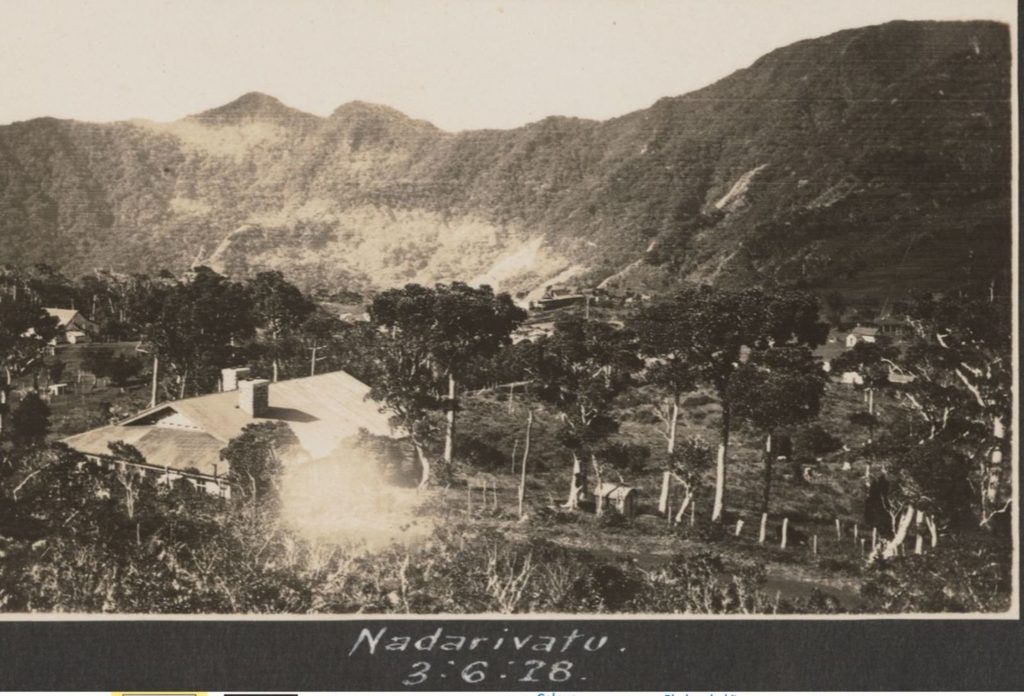
A photograph of the Nadarivatu colonial administrative centre or hill station in 1928. Picture: AUCKLAND LIBRARY
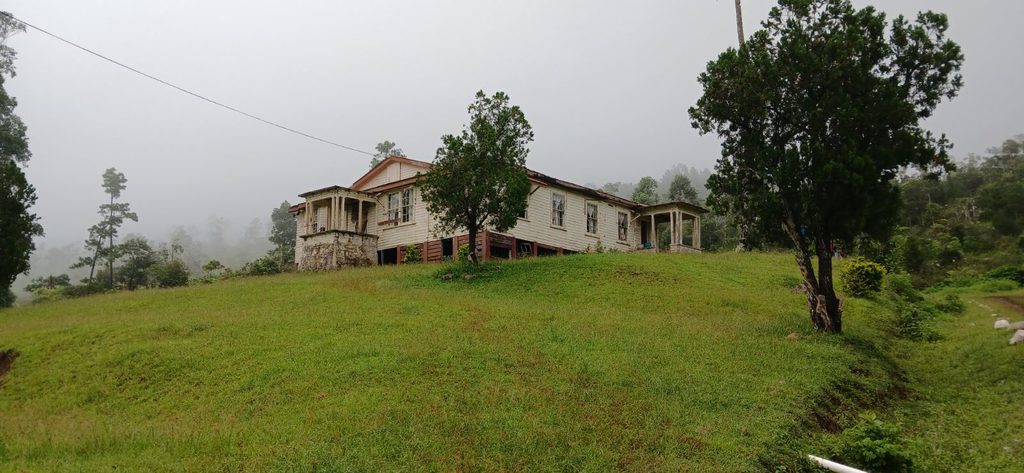
William Ernest Goodsir’s home is now the Stone Bowl Lodge up in Nadarivatu. Picture: KURUVITU SIVA
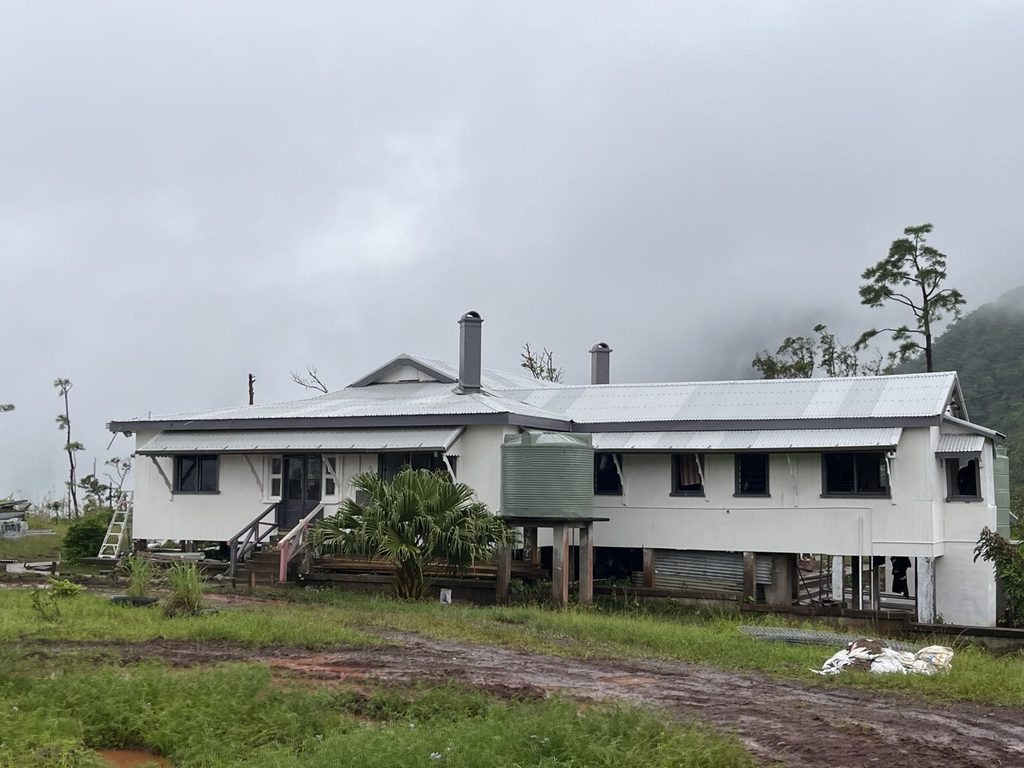
The old home that Ratu Sukuna and Brewster lived in.
Picture: ANA MADIGIBULI
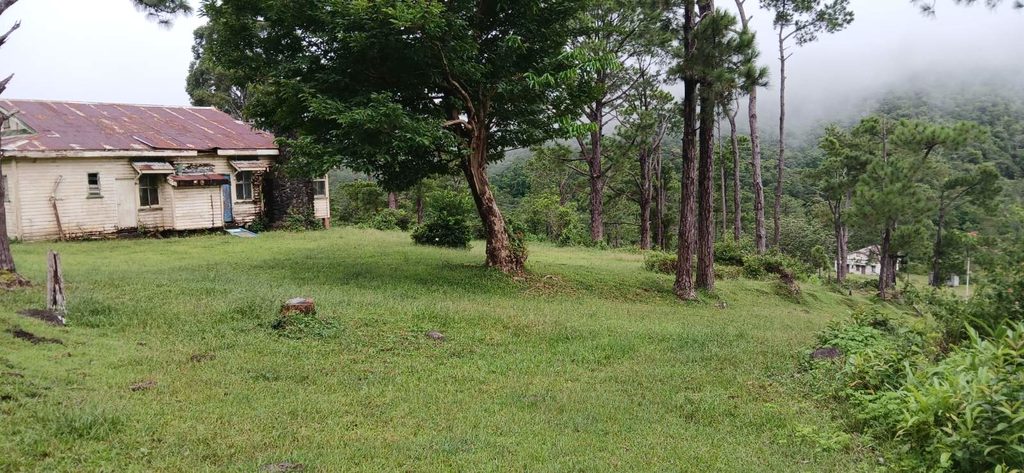
The two Emperor Gold Mine homes can be seen here. Picture: KURUVITU SIVA
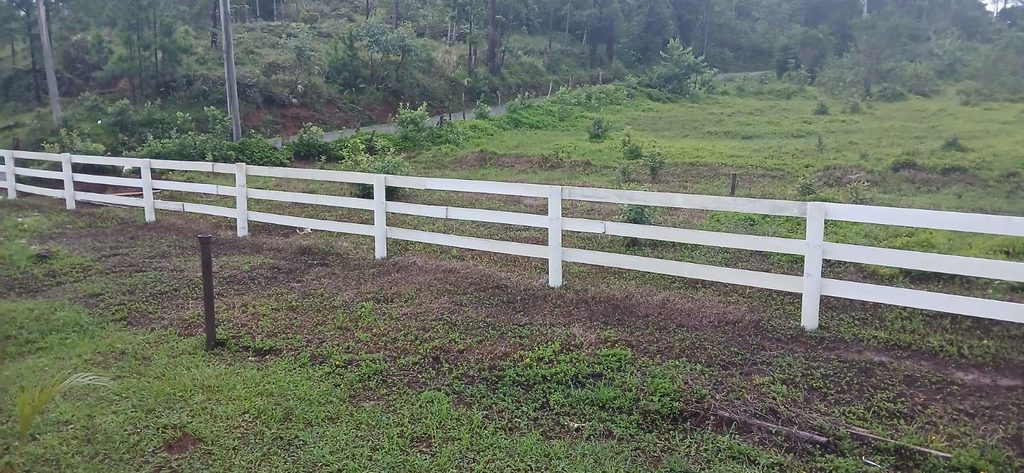
This used to be the old tennis court for the centre. Old tennis posts can still be seen today. Picture: KURUVITU SIVA
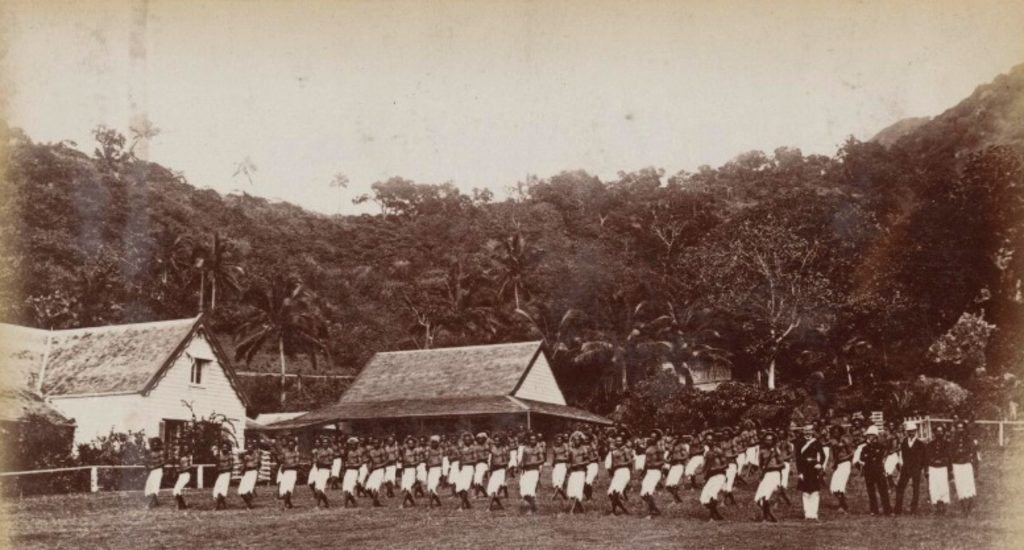
The Fiji Armed Native Constabulary in 1890.
Picture: DIGITALPASIFIK.ORG
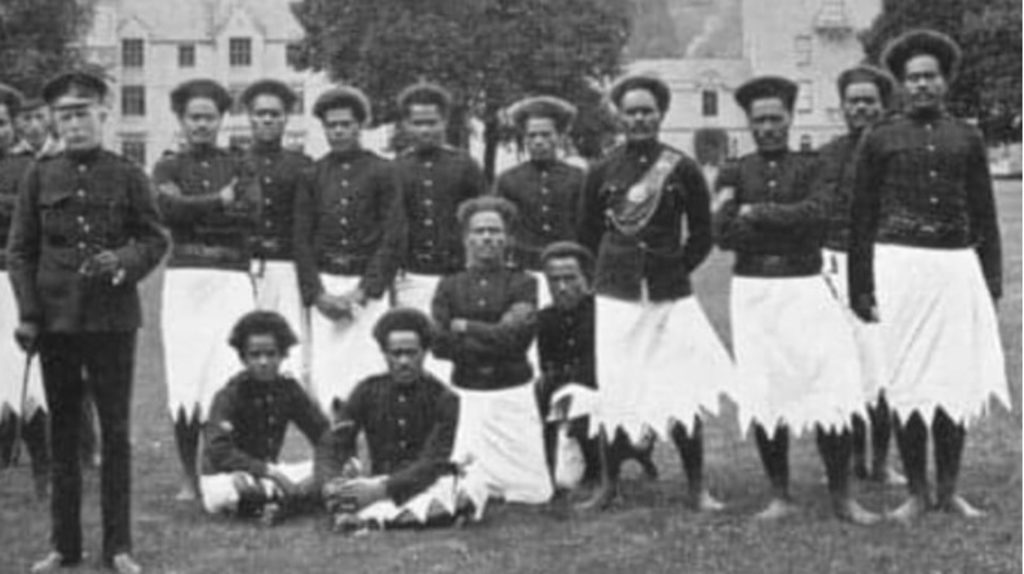
Adolph Brewster (left) with his detachment of the Armed Native Constabulary on their visit to Balmoral in Scotland in 1902.
Picture: TORBAYWEEKLY.CO.UK/COURTESY OF TORQUAY MUSEUM

